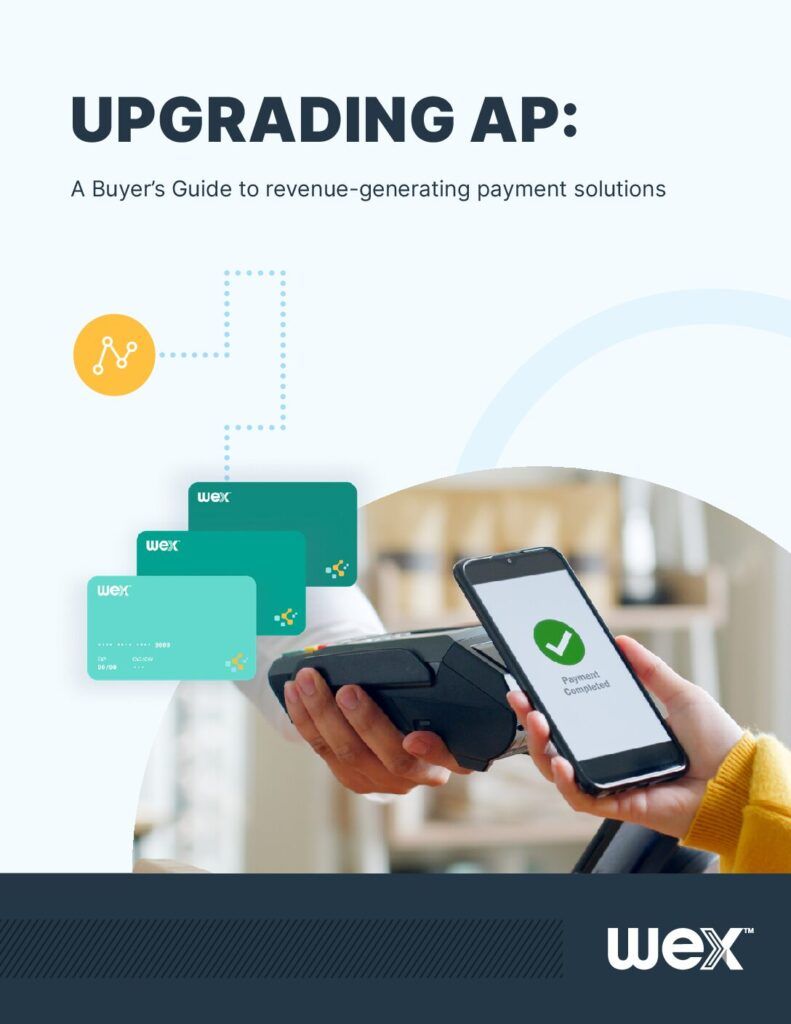Stay connected
Subscribe to our corporate payments blog to stay on top of payment innovations.

Accounts payable (AP) departments manage a lot of numbers, data, and vital information to ensure their businesses run smoothly. What more could you ask for than an opportunity to make things easier when running your AP department? Here we’ll look at how adopting a digital card payments process can help you do just that.
Subscribe to get the latest on business payments.
Virtual cards were created to help simplify running your business by automating accounts payable (AP) processes, reducing the cost of paying suppliers, and creating more secure payments. A virtual card provides a randomly generated single-use code that is used for the payment of goods and services. A virtual card is perfect for secure transactions because it can’t be used repeatedly and is created with a pre-set amount that is determined by the user making the payment. Once payment is processed by the supplier, the card cannot be used again. Since there is no physical aspect to a virtual card, the process improves the experience for all parties involved in AP.
Virtual cards can be designated for many types of payments and accommodate the varying payment needs of suppliers. A virtual card not only reduces the manual labor required of an AP department to pay suppliers, but it also has increased security measures that reduce the possibility of fraud impacting your business. Once a virtual card payment has been made, the virtual card can be set to expire if the charge is not made within the designated time frame. This feature increases security measures and reduces the likelihood of cards being charged wrongfully.
For companies that regularly pay the same supplier for goods and services, virtual cards can simplify repetitive payments. The AP department in charge of paying suppliers typically requires manual labor, mailing expenses, and more, but with the use of virtual cards, the entire process is simplified for all involved. When virtual cards are utilized, vendors can plan to get paid on time – and sometimes faster – instead of waiting for a physical payment to come through the mail.

Download our AP Buyer’s Guide to compare options, see how virtual cards stack up, and find the best fit for your accounts receivable and payable workflow
Looking beyond the simplicity that comes from adopting virtual cards into your business, there are several additional ways that virtual cards can improve your business. Here are six benefits that businesses can experience when paying suppliers electronically:
Take the next step to move your business forward and digitize AP operations. Converting to a digital payment solution helps your businesses stand out against competitors and stay ahead of technological trends in your industry. The future of business operations is transitioning to a digital format where everything can be easily accessed electronically. There is also a growing culture shift to measurable sustainability practices in businesses, which further justify the importance of going paperless. Stay competitive and integrate virtual card technology into your business.
By incorporating a virtual card system and online payments, AP departments – which traditionally are cost centers – can be made into revenue generators. Doing so also enables efficiency and security.
Making the switch from manually intensive payment processes, such as writing physical checks, to automated accounting systems can be an effective way to save money. Processing checks is costly for suppliers since banking and processing fees can vary greatly depending on the size of the business and its financial institution.
According to the Association for Financial Professionals, the average cost of processing a check is around $2 to $4, whereas ACH payments (a type of virtual payment) typically cost around $0.26 to $0.50. Virtual card payments not only offer similar cost savings but can also generate rebates, giving companies a chance to earn money back on their outgoing payments.
Small businesses that receive or write thousands of checks per year become burdened with costs for envelopes and stamps. Plus there is the time spent writing, mailing, collecting, and reconciling those payments.
Adding to your company’s bottom line can be achieved with a virtual payment system that not only eliminates fees, but also generates revenue as a result of the savings created by eliminating manual processes.
Even with all the benefits, converting to a virtual payment system can be daunting. Systems need to be in place in order to adopt virtual card payments to suppliers. First and foremost, suppliers need to be on board with converting and receiving a digital payment compared to traditional paper checks. Convincing vendors to transition to a new and different payment method can present hurdles.
Using a virtual card payment solution is very similar to the payment process of a credit card. Although most suppliers are likely to have experience using a credit card, your business still needs to dedicate time to educate them on the differences and benefits of using a virtual card.
Learn more about how to get started with a digital card payments program.
Explore how WEX solutions can help you gain efficiencies, cut costs, and generate revenue.
Contact us to get started
For more insights and updates on corporate payments, check out:
Stay up to date on the latest in business payments by subscribing to our blog! Simply hit the “Subscribe” button above or submit your email address in the form below.
The information in this blog post is for educational purposes only. It is not legal, tax or investment advice. For legal, tax or investment advice, you should consult your own legal counsel, tax, and investment advisers
Subscribe to our corporate payments blog to stay on top of payment innovations.